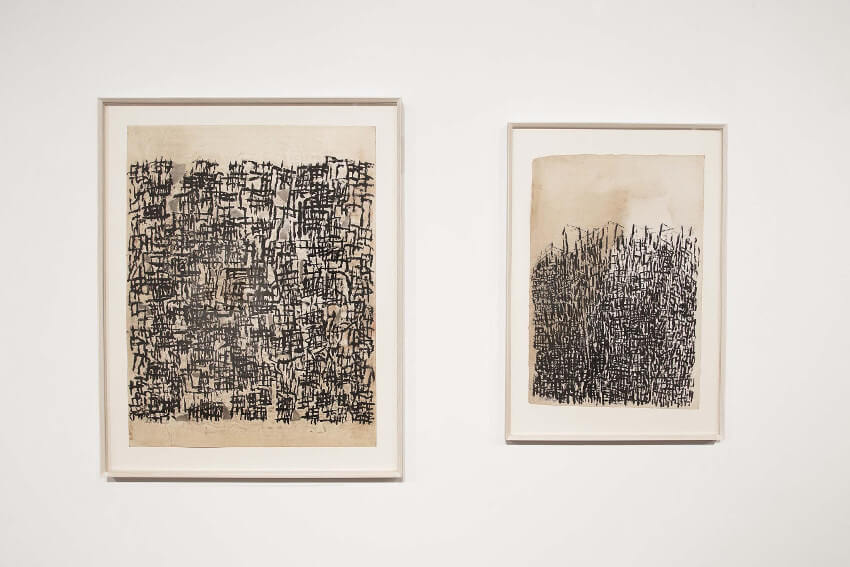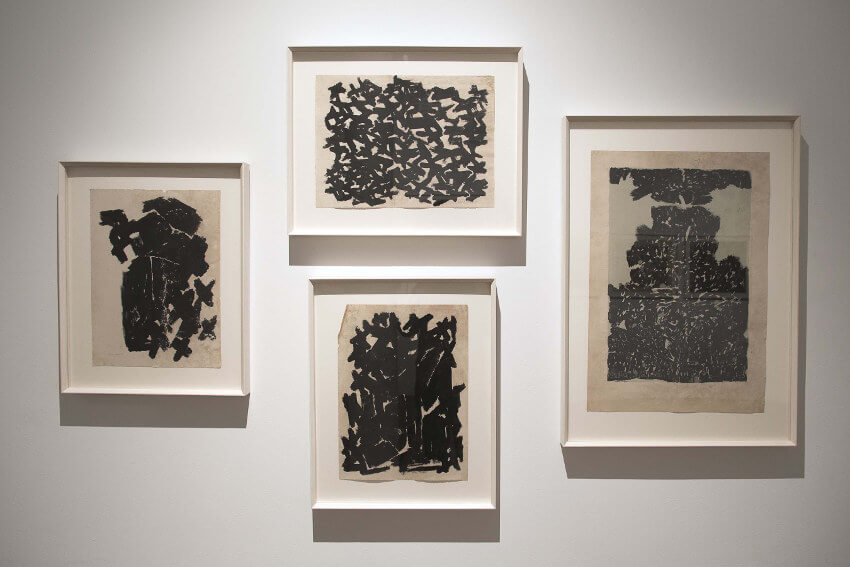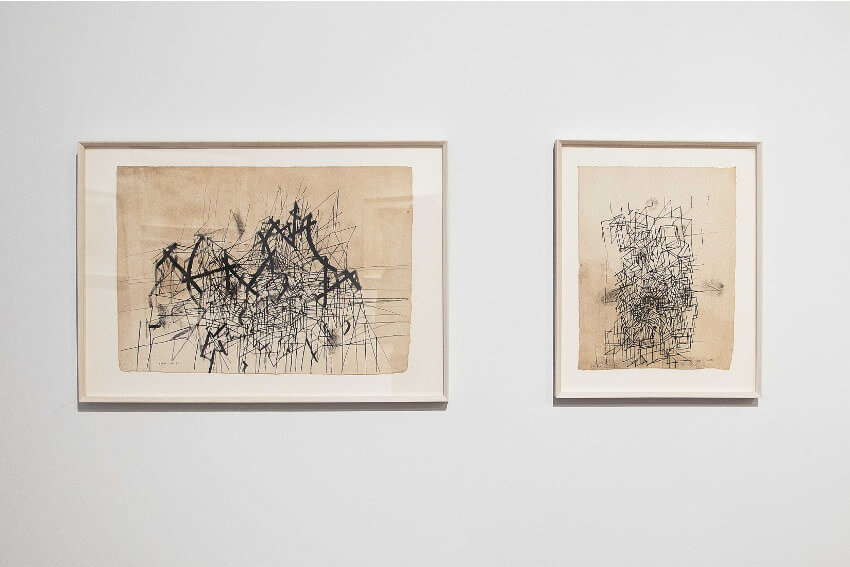
When the Art of Arpita Singh Went Abstract
The images that inhabit the figurative paintings Arpita Singh has been making since the late 1980s spring to life with excitement and energy. They buzz and vibrate with life, and confidently speak to the human condition. There is no single overriding narrative in her works, and yet every painting she makes clearly hintsat an unfolding story. What exactly that story is is unclear, or at best complicated, as Singh herself seems not to have answers but only questions, or rather inquiries that she is diligently exploring in her art. But like any artist who uses figurative elements, Singh has been labeled a figurative artist many times. She has also been labeled a feminist, a Modernist, and a progressive. These labels emerge, no doubt, from the sight of the creatures she paints, entities with whom Singh so obviously sympathizes, though she has placed them in settings that so painfullyhighlight the trials and complexities of life. But labels are just shorthand for those who wish to talk about paintings without really trying to dig deeper to understand an artistand her work. And perhaps the most burdensome label placed on any artist is that of nationality. Arpita Singh has exclusively been promoted as an Indian artist. But as René Magritte pointed out, “To show Belgian art makes as much sense as showing art from vegetarians.” Regional origin is irrelevant. Art is the domain of human culture. That is why it is such a joy to see the body of work currently on view by Arpita Singh at Talwar Gallery in New York. Although this gallery is itself dedicated to showing only artists from the Indian subcontinent, it is possible to simply ignore that fact and focus on the point that this particular body of work, consisting of abstract drawings Singh made between the years 1973 and 1982, is truly universal in its appeal, and underscores the truth that Singh is a citizen of the world, and her work an offering to all humanity.
Arpita Singh Discovers Abstraction
Arpita Singh was born in what is now called Bangladesh in 1937. Her art career began in a somewhat academic setting. She received her Fine Arts degree from Delhi Polytechnic in New Delhi, India, an engineering school now known as Delhi Technical University. But after graduating she took a radical turn in a different aesthetic direction. She became employed by the government in a program that encouraged a return to traditional Indian art forms. In the program she practiced weaving and other traditional techniques and became immersed in the aesthetic history of her culture. Later, when she began painting professionally, she found herself struggling with what she considered to be uninspired compositions, such as drab still life paintings. So she turned to some of those ancient, traditional roots when she began seeking ways to reconnect with the spirit of her art.
In the early 1970s, Singh took a break from making pictures of things, and got down to the basics of what making a painting is all about. She connected with the gestures of her craft, including those same gestures weavers, textile workers, and artisans of all kinds have always used. She began making drawings on paper, in which she simply used those ancient marks to express the formal elements of line, shape and form. Using an absolute minimum of color and virtually no reference to figuration at all, she brought these pared down compositions into a state of harmony through the expression of universal aesthetic ideas. To look at these drawings in context with her previous work, it seems that she suddenly made a radical transition into abstraction. Rather than making pictures of things, she suddenly was making poetic microcosms of abstraction. But in truth she had simply returned to the most basic expression of art: the human gesture, and the expression of the essential aesthetic elements of the physical world.
 Arpita Singh - Tying Down Time exhibition, Talwar Gallery, 2017, installation view
Arpita Singh - Tying Down Time exhibition, Talwar Gallery, 2017, installation view
Save Everything
These abstract drawings that Singh created, over a period that spanned nearly a decade, gave her the creative inspiration for which she had longed. They gave her the opportunity to explore feeling and emotion free from any connection to objects or stories. They connected her with her own physicality and the physicality of her tools, and that connection instilled in her the foundation on which she has created her vast oeuvre since. The harmonies, depth, vibrance and liveliness in her contemporary paintings emerge from that pared down visual vocabulary Singh developed during her so-called divergence into abstraction. But looking carefully at her figurative paintings we can see that truly this was no divergence. It was simply part of an ongoing process of expression. These apparently abstract works contain much that is concrete. And her figurative paintings contain much that is abstract.
It is interesting, and perhaps revealing, that the drawings currently on view at Talwar Gallery have never been exhibited before. Perhaps Singh did simply look at this phase of her development as a time of learning and experimentation. Perhaps she never intended to show these works in public, as maybe she did not want to be seen as making a change in her direction. Or perhaps she did not want to be misinterpreted as making an overt statement about the relative benefits of abstraction or figuration. Maybe these works were simply part of her private studio practice. It was, in fact, evidently her husband, who is also a painter, who saved these works on paper, preserving them over the decades. It is thanks to him that we have this treasure to be able to consider them now. And it is especially lovely to look at them with the benefit of hindsight looking back at all of the other work Singh has created since these drawings were made. The ability to compare them in context with the works that followed them reiterates that this body of work is not separate from her other work. It is integral to it.
 Arpita Singh - Tying Down Time exhibition, Talwar Gallery, 2017, installation view
Arpita Singh - Tying Down Time exhibition, Talwar Gallery, 2017, installation view
Solemnity on the Surface
The title of this current exhibition, Tying Down Time, offers a poetic starting point for looking at the drawings in the show. Much of the figurative work Singh has made addresses issues that are important to contemporary human culture, such as physical violence, war, and the systematic subjugation of the weak. Tying Down Time could easily have a threatening ring to it if the phrase is read one way, as though the time has come to tie someone down. But also the phrase could also be read in a more benign way, as though it refers to a common, and essentially human, melancholy desire to pause time, or to consider some nostalgic period from the past. Certainly, since this show only features works that were created during a specific time period in the past, and since those works are unique in the rest of her oeuvre, it would seem that some level of nostalgia is at play in the title of the show. But it is also tempting, especially when looking deeply at the inherent darkness and forcefulness of the marks and compositions in these works, to consider that something far more solemn is also in play.
One thought that occurs to me personally time and again when looking at the abstract drawings of Arpita Singh is that they seem to speak to a time of germination: they show a time of beginnings and possibilities; a time of potential. They are like proto-narratives. They set the stage for impending occurrences. It is as if they are emitting energy, like miniature primordial universes. The fact that Singh used such a subdued palette for these works reminds me of the soil, the air, the water, the great underneath, the swelling surface from which future things emerge. These works did eventually transform her painting style in a way that gave to it a visual depth and weight that did not exist previously in her work. They were indeed the seeds of something to come. And like the primordial source they represent something universal and pure, and something ancient. As each of these works seems to have coalesced into itself through some organic process, moment by moment, stroke by stroke, so does the entire oeuvre of Arpita Singh seem to have emerged out of them, coming together in part because of their energy and unfolding naturally, inevitably, and poetically from them as a source.
 Arpita Singh - Tying Down Time exhibition, Talwar Gallery, 2017, installation view
Arpita Singh - Tying Down Time exhibition, Talwar Gallery, 2017, installation view
Tying Down Time is on view at Talwar Gallery in New York through 11 August 2017. It is an opportunity to explore a unique moment in the career of an artist who still has not received her due, and to consider the universal abstract elements that underlie the more familiar figurative paintings for which she is widely renowned.
Featured image: Arpita Singh - Tying Down Time exhibition, Talwar Gallery, 2017, installation view
All images courtesy of Talwar Gallery
By Phillip Barcio






